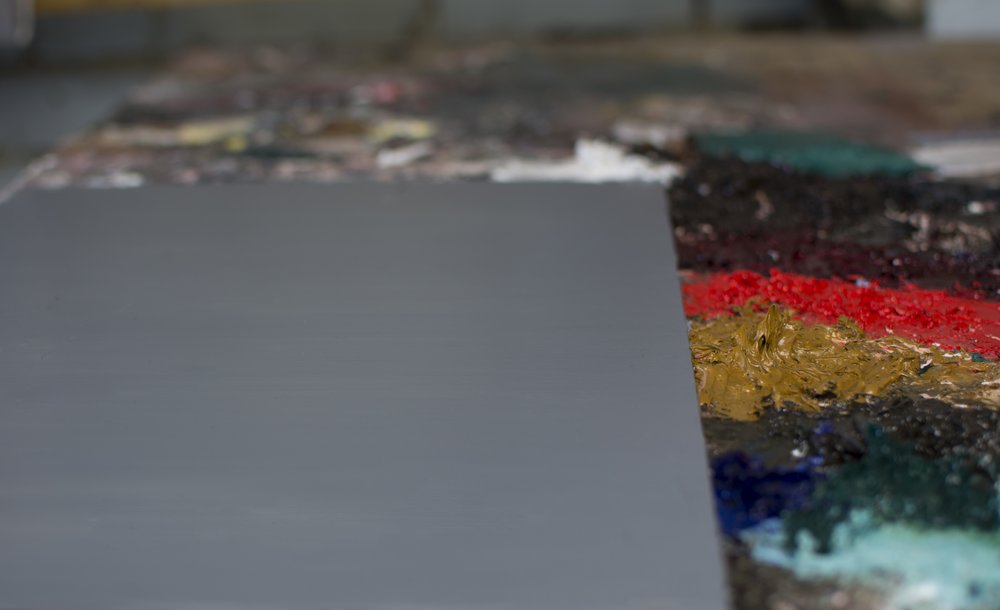My palette consists of Titanium White, Burnt Umber, Alizarin Crimson, Cadmium Red deep, Yellow Ochre and Burnt Sienna.
It is worth mentioning that there is no ubiquitous flesh tone that can be mixed to encompass the myriad of human skin tones that exist. Having said that, if the basic principles of how form turns in relation to light is grasped one can begin to develop a grounding in mixing accurate and rich skin tones.
I start with local colour. This is best understood as the colour skin appears when it is under a neutral value( e.i not too dark and not too light). This is achieved by adding Burnt Umber to darken the mixture and Cadmium Red to maintain some of the chroma apparent in the local colour I'm observing.
Once the Local colour is mixed I then begin to create a darker mixture for the shadows.
The best way to mix shadow colours is to understand that at the heart of the colour wheel is an absence of light (i.e. a black.) Therefore to darken a colour it is best to add the opposite - or compliment - to that of your local colour. Here our local colour is somewhere between yellow and red; therefore adding a blue will serve to turn the local colour away from the light in a convincing manor, since blue is opposite yellow on the colour wheel, thus rendering a realistic sense of shadow. Simply adding black to the mixture would create very dull shadows lacking in the rich blues and greens that are often present on the human face when form turns significantly away from the light. It is also important to remember that cool colours recede in visual space, meaning that composing a shadow form out of cool colours like Ultramarine Blue will serve to visually push your shadows behind the warmer forms of the mid-tones that surround the shadow edge. This inevitably results in a more compelling illusion of shadow than simply adding black could ever achieve.
Though this has been a very specific analysis of how I mix this particular skin tone; the underlying principles can be applied to mixing any kind of flesh tone. So long as a basic grasp of the colour wheel is present and the subtly of form are well measured and applied, rendering skin tone becomes somewhat easier than the myriad of books on the subject may suggest.
I hope this has been somewhat helpful and feel free to share and like.
